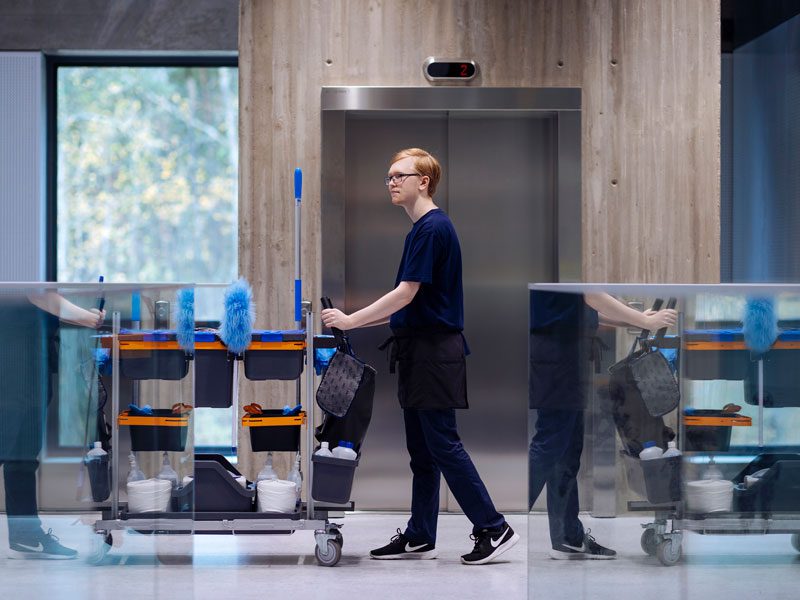Before the renovation, the only user of Kirkkokatu 12 was the Ministry of the Interior. By getting rid of private offices it was possible to gain the space required for a modern activity-based office, and employees of the Ministry for Foreign Affairs and the Finnish Government now use this office, in addition to the employees of the Ministry of the Interior. The building is entered through a light-filled lobby. A statuesque stairway leads to the first floor, where the building’s meeting rooms are located.

At Kirkkokatu, the floor with the meeting rooms represents the new Government Premises Strategy at it best: all ministries can use the different-sized meeting rooms. The lobby has become a popular place to meet others and to do work before and after meetings.

160 Ministry for Foreign Affairs employees also moved into Kirkkokatu for three years. On two floors there are areas for quiet work, areas for interaction and a room where people who have had a long commute can rest. Once the Ministry for Foreign Affairs’ own premises in Merikasarmi in Katajanokka, Helsinki are completed, these floors will be freed up for other employees.

There are no personal workstations at the Kirkkokatu building now. Each employee carries around everything that is needed during the day, and sometimes there can be a lot to carry around. The house committee is currently looking into the best type of panniers or bags for the employees. Employees can lock their things in secure personal lockers overnight.

Minister of the Interior Paula Risikko’s office is the only personal office at the Ministry. Instead of a formal negotiating table, Risikko chose a sofa and armchairs for her office.

The creation of a new type of working environment does not stop once the furniture is in place and the employees have moved in. Only when the premises are in use is it possible to find out whether there is enough storage space for employees’ footwear, for example.

At the café for employees of the Ministry for Foreign Affairs, Ministry of the Interior and the Finnish Government, employees can eat their own pack lunches or buy refreshments. The balcony in the background was previously part of the office of the Minister of the Interior, and was out of bounds to almost everyone. Since the renovation, the balcony has become a popular summertime terrace.

The Government’s new activity-based office model suits the changing needs of state administration. The furniture is now owned by Senate Properties rather than the Prime Minister’s Office, so the ministries no longer need to think about their furniture if their premises needs change.

The Ministry of the Interior’s quiet space has become a popular place to focus on writing demanding texts.

Employees can choose the area that supports their current stage of work. When a task involves throwing ideas around with colleagues, Ari Evwaraye, Head of Internal Security Strategy at Ministry of the Interior, goes to an area where others will not be distracted by the noise.

The Ministry of the Interior’s employees are experimenting with the extension of the quiet area, as many people need to be able to concentrate in peace. The renovation of the premises has been a success, according to Jarmo Tiukkanen, Senior Adviser.





















